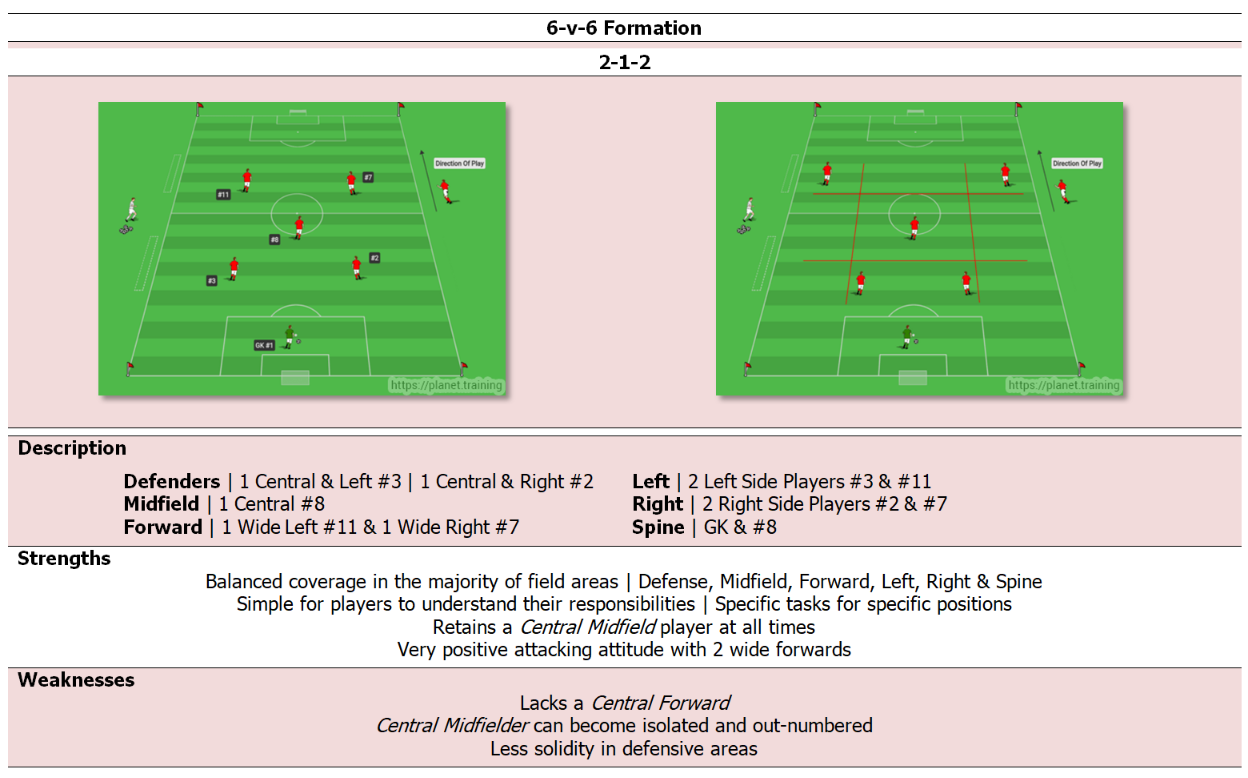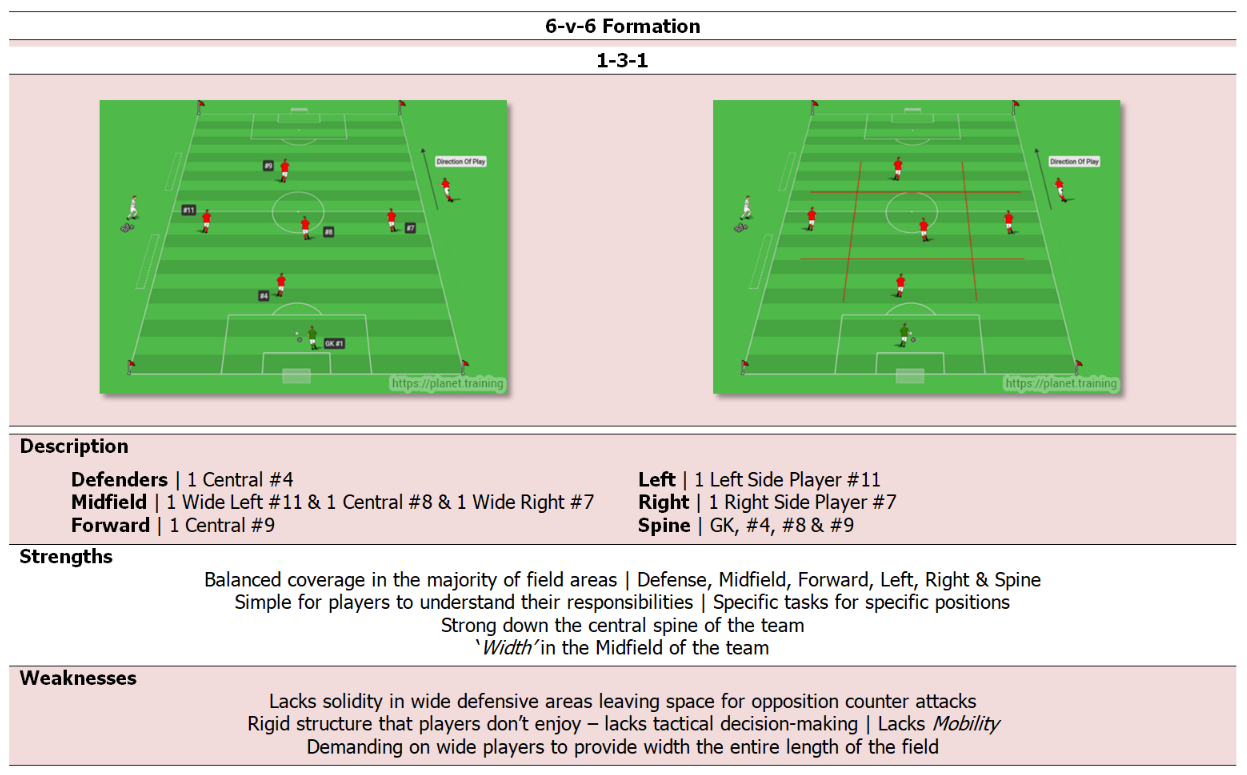WORLD CLASS COACHING
Pro Academy Training Sessions
By Jonny Carter
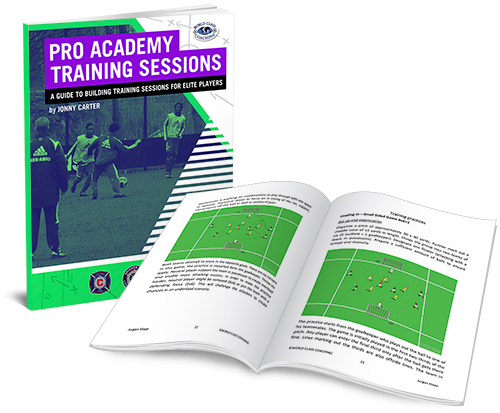
TABLE OF CONTENTS
Part Three
THE PRINCIPLES OF SOCCER
NUMBERING SYSTEM
SMALL-SIDED FORMATIONS
5V5 FORMATIONS
6V6 FORMATIONS
The Principles of Soccer
Introducing the Principles of Soccer | Attack & Defense
A team’s system of play or formation is just a template, a theoretical concept that provides structure to how a team will attempt to impose their ‘philosophies’ or ‘attitude’ on any given game. Well considered theory of a team formation will enhance the chances of a team’s success but the arrival of success is dependent on the player’s capacity to exercise the ‘Principles of Soccer’ regardless of the team formation.
The basic primary objective of soccer is to score goals. Given the rather low scoring nature of soccer this task is harder to achieve than first might be thought. In order to score goals a team must first have to create goal scoring opportunities, while limiting the opposition attacks and protecting their own goal. There are considered defensive and attacking principles that provide tactical structure towards achieving the primary objective of scoring more goals than the opposition.
Introducing the Principles of Soccer | Terminology
When discussing the Principles of Soccer there is certain recognized terminology that allows for greater understanding and limited confusion. It is common in soccer to refer to the defensive and attacking groups; however, it is worth noting that when discussing the Principles of Soccer it is better considered to assume that all players are attackers when their team is in possession of the ball and that all players are defenders when their team is not in possession, regardless of a player’s evident individual position or group. Defining the
Principles of Soccer | Attack
1. Penetration | The first ‘Attacking Principle of Soccer’ is to play the ball forward; termed ‘penetration’. The opposition goal is forward and so the ball will need to be played forward in order to score goals. Penetration of the opposition defense can be achieved in a number of different ways…
• Dribble | the ball can be moved forward up the field very effectively on the dribble
• Passing | the fundamental foundation of the game and the most effective way to penetrate
• Throwing | from set-piece throw-ins and the goalkeeper
• Shooting | striking the ball at goal, inclusive of heading
2. Support | The arrangement of teammates and their availability to receive a pass from the player in possession; 1st attacker. Passing ‘angles of support’ should be offered ahead of the ball to allow penetration, to the side of the ball to facilitate a change to the ‘point-of-attack’, and behind the ball to provide an option to abandon, reset and re-launch an attack while retaining possession of the ball. The ‘distance of support’ by the 2nd attacker/s is another vital consideration. A supporting player will require ‘mobility’ in order to keep creating new angles of support.
3. Width | By providing width to an attack an offensive team look to stretch and ‘unbalance’ the opposition defensive structure and ultimately create situations through which to penetrate. Providing attacking width is a direct contradiction to the defensive principle of ‘compactness’ and often more space, fewer defenders and less pressure on the ball can be found out wide. Also the delivery or crossed ball from wide areas can be particularly potent for an attacking team if executed correctly.
4. Depth & Height | The arrangement of supporting players behind the ball – ‘depth’; and supporting players ahead of the ball – ‘height’. Though perhaps not immediate passing options in support of the 1st attacker the capacity to hold depth and height allows an attacking team to play expansively and is in direct contradiction to the ‘Defensive Principles of Soccer’.
5. Imagination | All the structure and ‘Attacking Principles’ can be overridden and negated by creativity, inspiration and imagination.
Defining the Principles of Soccer | Defense
1. Pressure | The nearest defensive player to the ball, the 1st defender, must apply immediate goal-side ‘pressure’ to the ball in an effort to deny the attacking penetration from the 1st attacker; penetration being the number one ‘Attacking Principles of Soccer’. The role of the 1st defender – deny the penetration.
2. Contain & Delay | Meaning to slow down or delay the opposition attack, denying the opportunity to penetrate and allowing the defensive players to recover ‘goal-side’, ‘funnel-back’ and reorganize into correct shape. Competent defenders tend not to rush into physical confrontation rather choosing to use delaying tactics and ushering the 1st attacker to less dangerous situations on the field.
3. Cover | Defensive players in defensive support of the 1st defender are referred to as the 2nd defender/s. These ‘covering’ defenders are close enough to the 1st defender to assume the 1st defender responsibility should the 1st attacker be able to penetrate beyond the 1st defender.
4. Depth | The remaining defensive players behind the ball providing 3rd defender defensive coverage ‘goal-side’ of the 1st attacker. Recovery runs allow additional defenders the opportunity to work back and contribute to the defensive effort away from the immediate ‘pressure’ on the ball.
5. Compactness & Concentration | Refers to how ‘narrow’ and how ‘deep’ the team ‘groups’ are across the field both laterally and vertically negating the most immediate risks. The defensive team wish to close the gaps denying space or opportunity for potential ‘penetration’ against them and so they ‘pinch-in’ tightly consolidating in the most dangerous area in front of their goal.
6. Balance | Refers to the positioning of 3rd defenders in relation to the positioning of the attacking players. 3rd defenders need to be deployed consistently across the ‘width’ and ‘depth’ of the field to provide defensive coverage on the ‘weak-side’ for a change to the ‘point-of-attack’.
CFJ West | Coaching the 4 ‘Key Moments’ of the game
In Possession - The strategic deployment of the Attacking Principles
Negative Transition - The changeover of possession when you lose the ball
Out of Possession - The strategic deployment of the Defensive Principles
Positive Transition - The changeover of possession when you win the ball
How an individual player, pairs, group and team behave and respond during the 4 ‘Key Moments’ of the game will significantly influence the outcome of the game and the success of the team.
CFJ West | Traditional Numbering System of Players
The goalkeeper has always and will always be number #1.
The defensive group is organized as Right fullback #2, Left fullback #3, two central defenders #4 & #5. Occasionally you would see number #6 used instead of #5, Bobby Moore for England 1966 is a good example. The concept of a back four is a relatively new evolution in the long history of soccer strategy; the early formations were very much front-heavy with little regard for defending. The balance between defense and attack is really only noticeable during the 1950’s and onwards. In English soccer a central defender is often still referenced as a “centerhalf” which is a legacy from the midfield player/s being pushed back into a defensive role but still carrying his midfield (half) name. The two last defenders or ‘full backs’ were pushed wide but too kept their name even with the addition of players to the defensive group.
The midfield four have the two central midfield players as #6 & #8; with the wide right midfield #7 and the wide left midfield #11.
The central forward is the #9 with the second striker, or playmaker, or attacking central midfielder as #10.
4-4-2 Formation Traditional Shirt Numbers
Goalkeeper #1
Right Fullback #2
Left Fullback #3
Central Defender | Centerhalf #4
Central Defender | Centerhalf #5
Central Midfield #6
Right Midfield #7
Central Midfield #8
Central Forward #9
Attacking Central Midfield | 2nd Striker #10
Left Midfield #11
CFJ West | Traditional Numbering System of Players
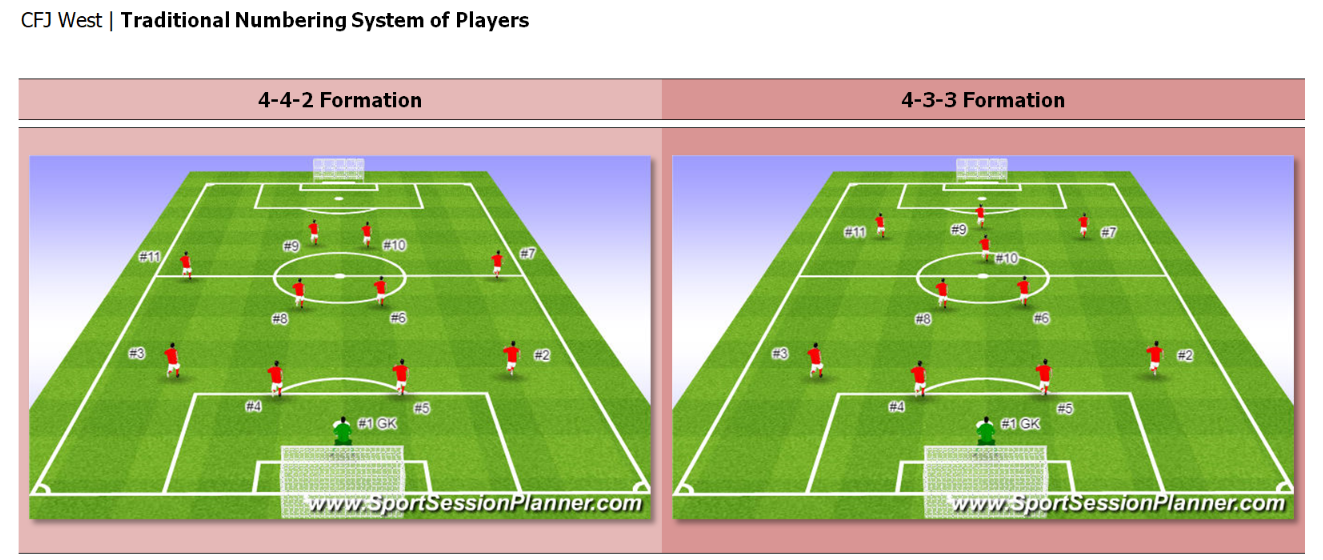
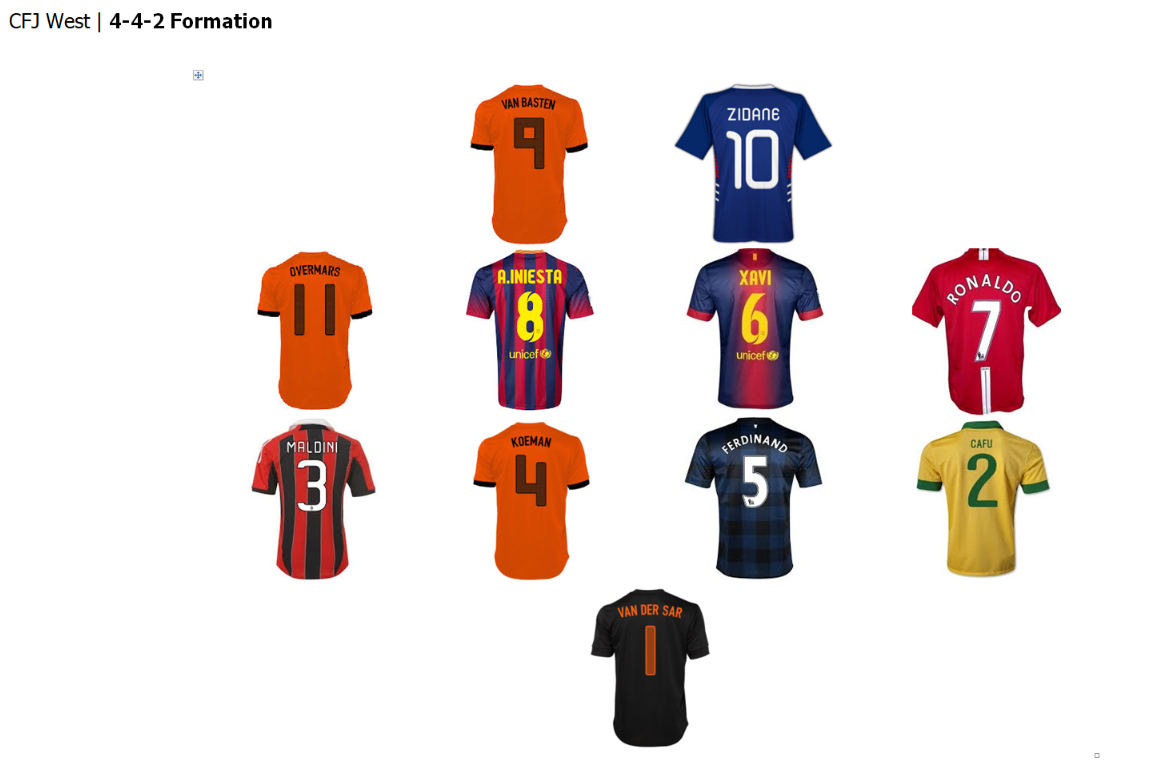
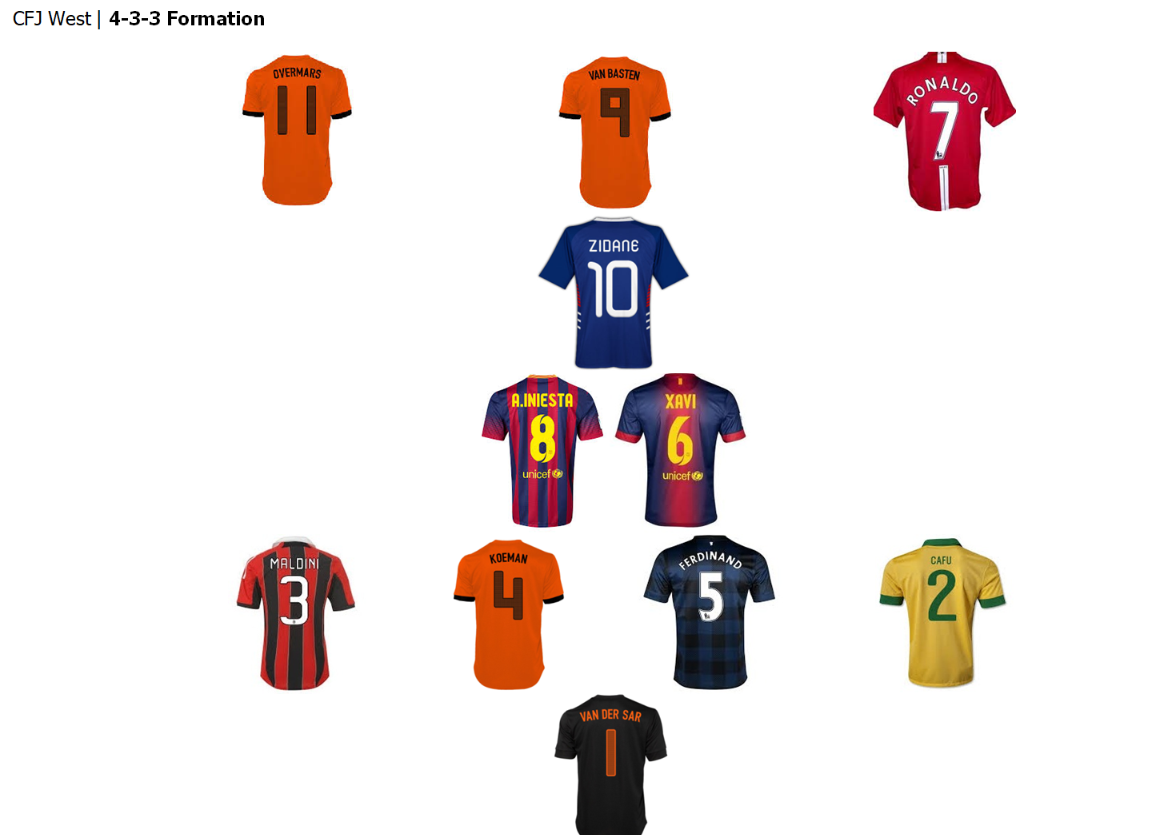
CFJ West | Small-Sided Formations
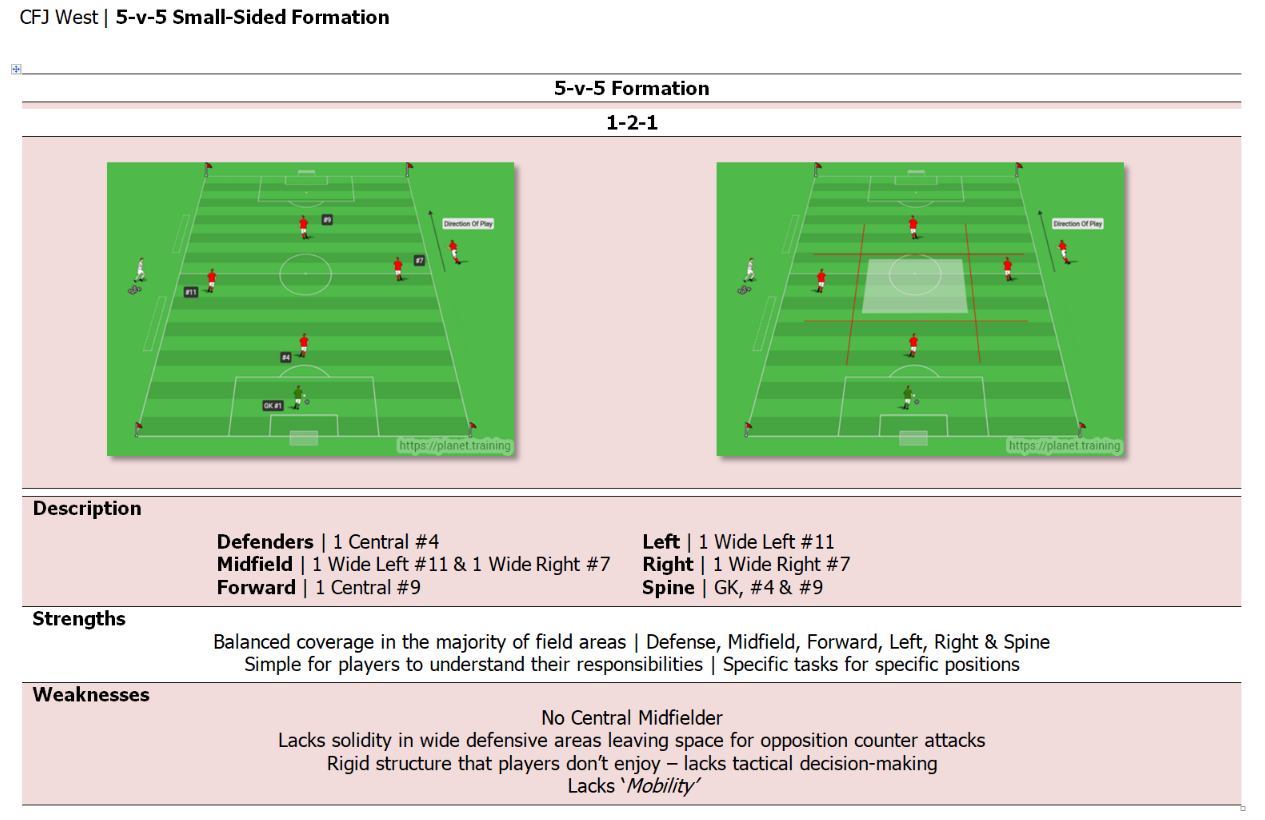
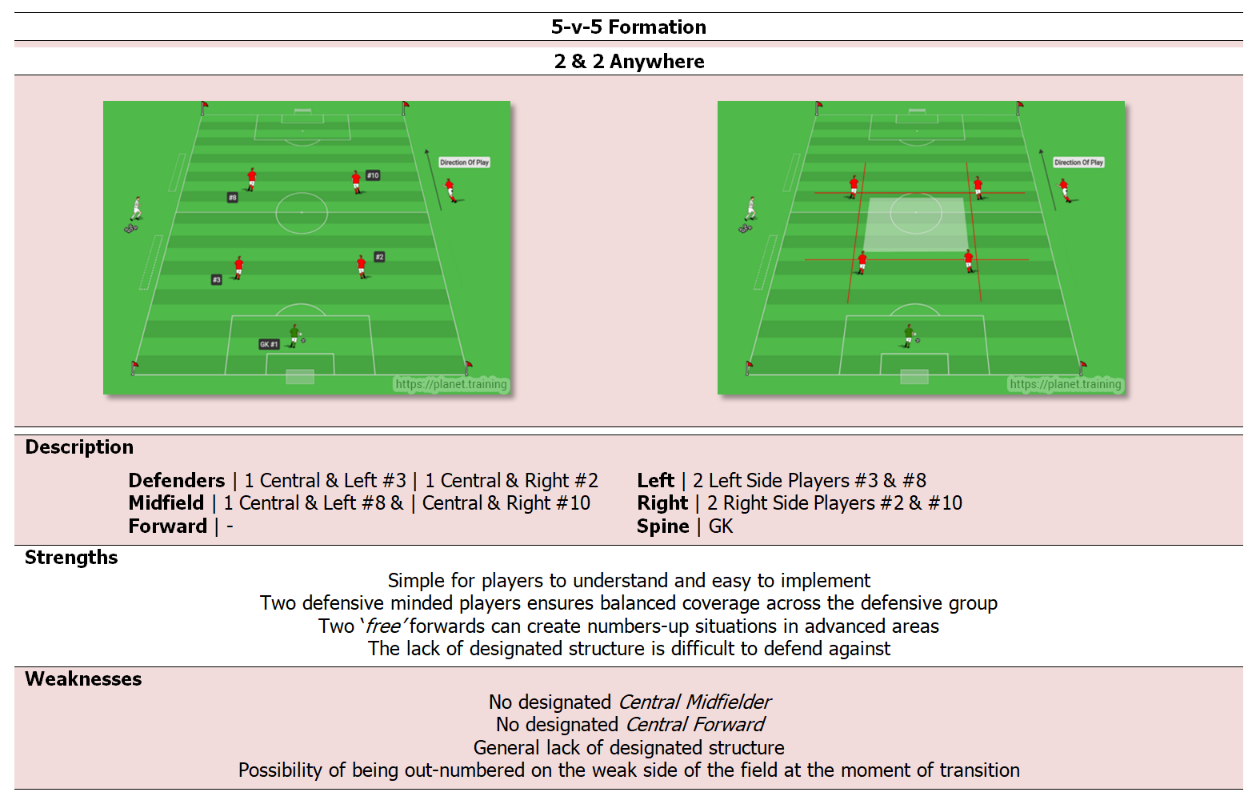
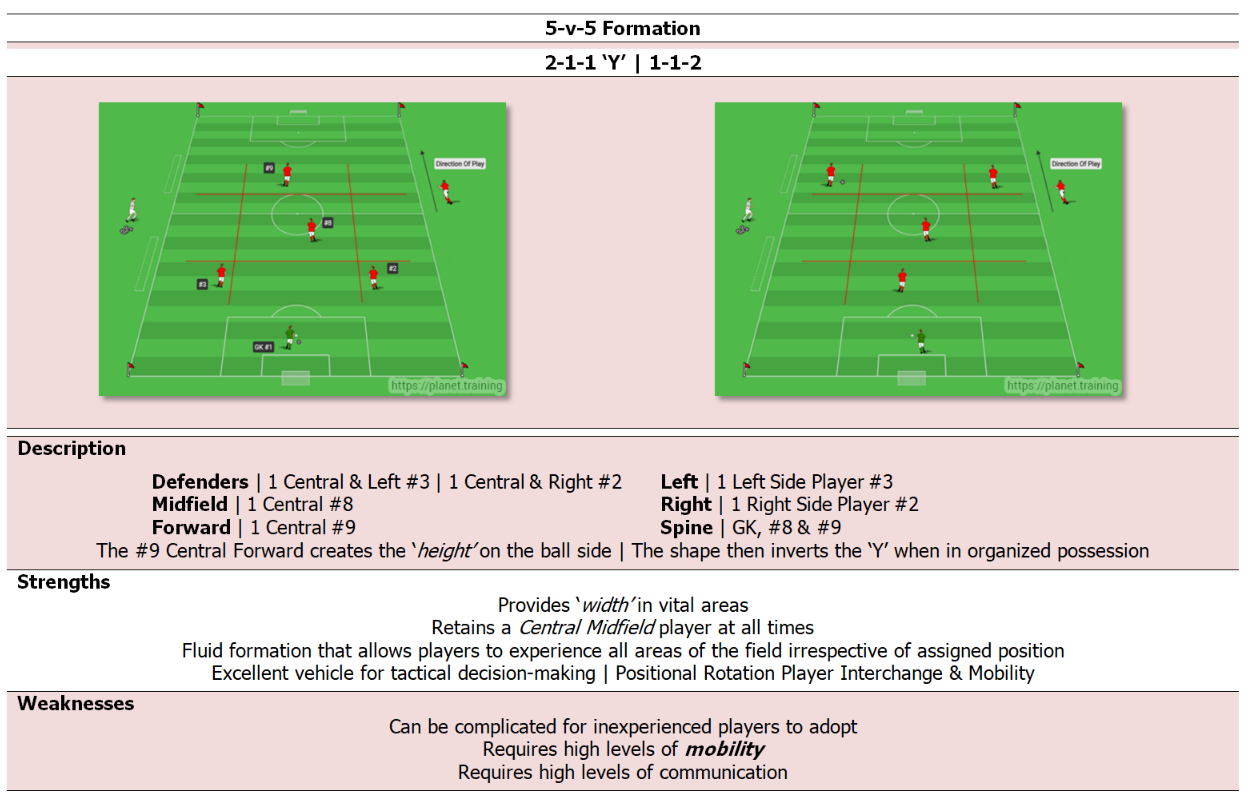
CFJ West | 6-v-6 Small-Sided Formations
